Posts Tagged: garden spider
A Bright Face in the Garden: Banded Argiope
We have bright faces in our Vacaville, Calif., pollinator garden. The bright faces are usually that of assorted bees and butterflies nectaring on members of the sunflower family: Mexican sunflower (Tithonia) and blanketflowers (Gaillardia). But...
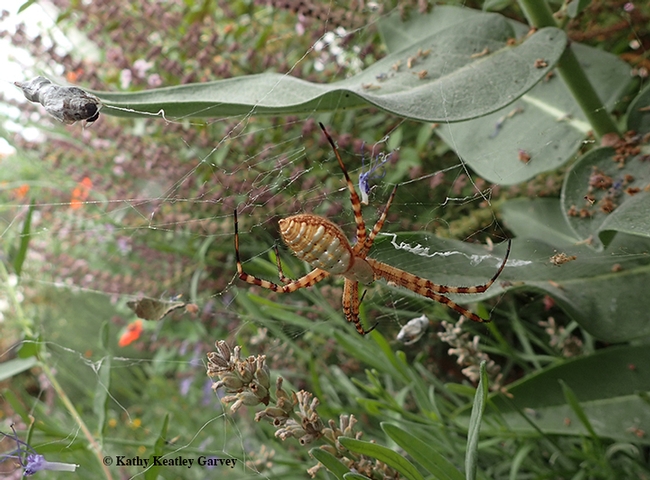
A banded garden spider, Argiope trifasciata, stretches out near its wrapped bee in a Vacaville, Calif. pollinator garden. (Photo by Kathy Keatley Garvey)
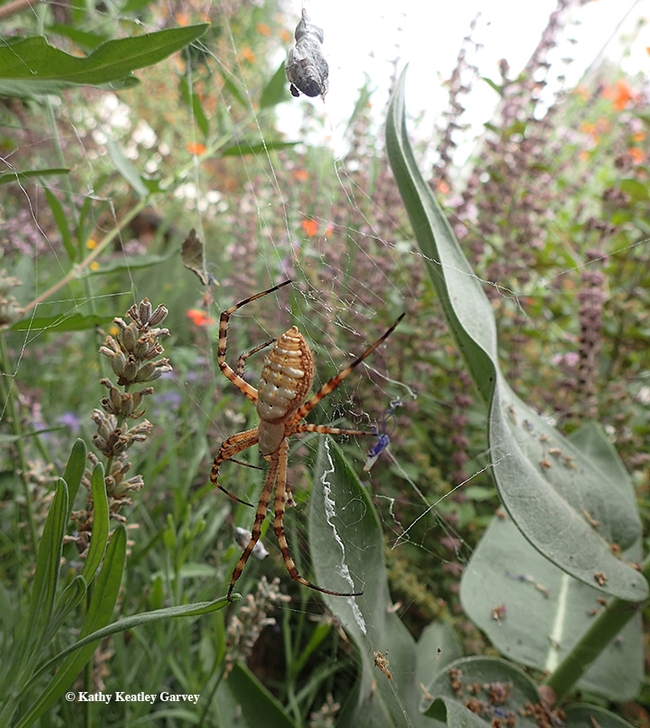
See the freeloader fly, family Milichiidae, feasting on the wrapped bee? Below it: the banded garden spider, Argiope trifasciata. (Photo by Kathy Keatley Garvey)
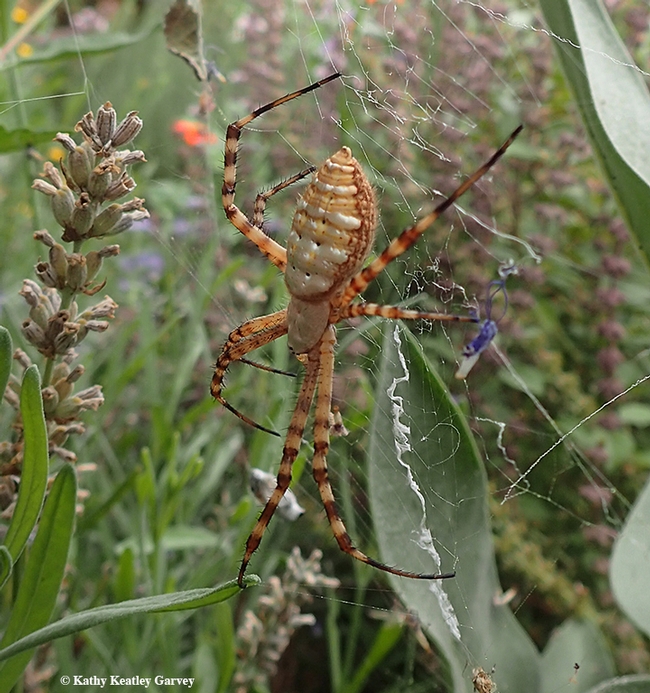
Close-up of the banded garden spider, Argiope trifasciata. Argiope is Latin for “with bright face” while trifasciata is Latin for “three-banded.” (Photo by Kathy Keatley Garvey)
Saga of a Spider's Kill
For more than two weeks now, we've been watching a banded garden spider (Argiope trifasciata) trap and wrap its unfortunate prey (fortunate if you're a spider, unfortunate if you're the prey) snared in its web. Most of its prey are honey bees,...

A banded garden spider (Argiope trifasciata) straddling lavender stems. (Photo by Kathy Keatley Garvey)

What prey is this? It appears to be a huge black bee, a female Valley carpenter bee. (Photo by Kathy Keatley Garvey)

Close-up of the prey, which turned out to be a female Valley carpenter bee. (Photo by Kathy Keatley Garvey)
Greed or Need?
Talk about greed. Talk about gluttony. How much food does a banded garden spider (Argiope trifasciata) need? For 30 minutes, we watched a well-fed banded garden spider catch bee after bee in its sticky web that it had cleverly anchored between two...

Fish-eye view of a banded garden spider (Argiope trifasciata) with prey. (Photo by Kathy Keatley Garvey)
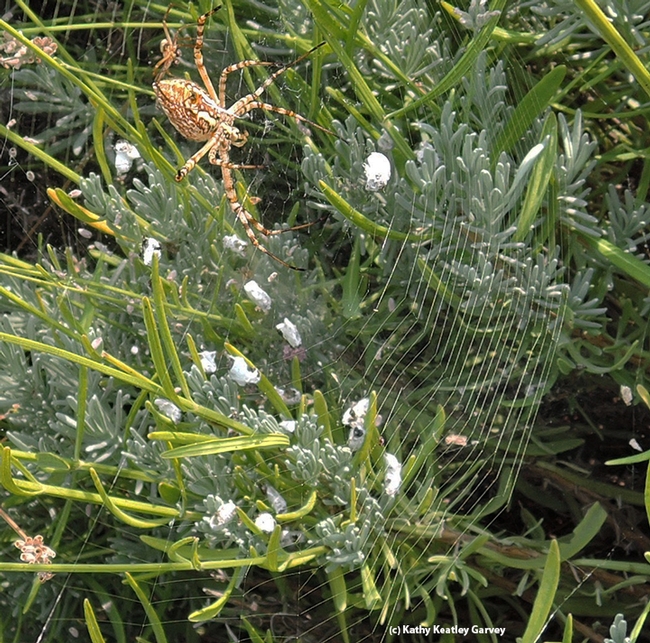
An intruder, a smaller spider (top), heads toward the resident spider. (Photo by Kathy Keatley Garvey)

The intruder is toast--or a wrap. (Photo by Kathy Keatley Garvey)
Freeloaders Never Miss a Meal
If your dog is well, a little chunky, you're probably accustomed to someone saying "Fido never misses a meal, does he?" Well, those little freeloader flies never miss a meal, either. They not only never miss a meal, but they're never late for...

A banded garden spider (Argiope trifasciata) wraps a bee. (Photo by Kathy Keatley Garvey)
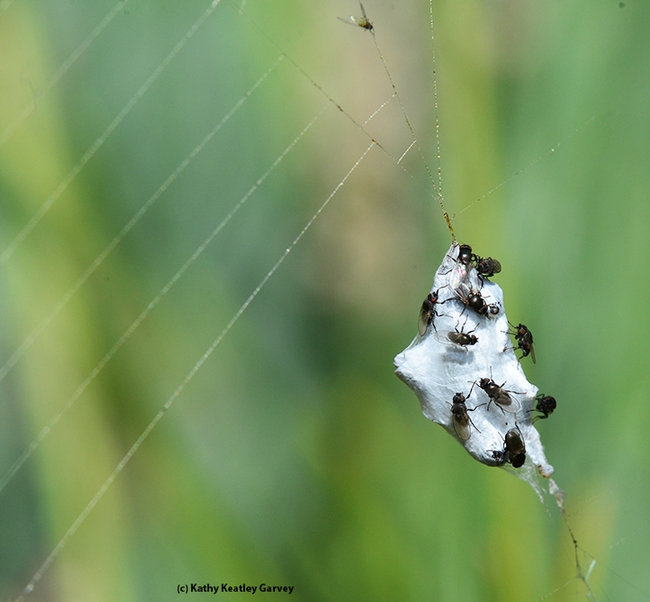
Freeloader flies, family Milichildae, gather around the abandoned prey. (Photo by Kathy Keatley Garvey)
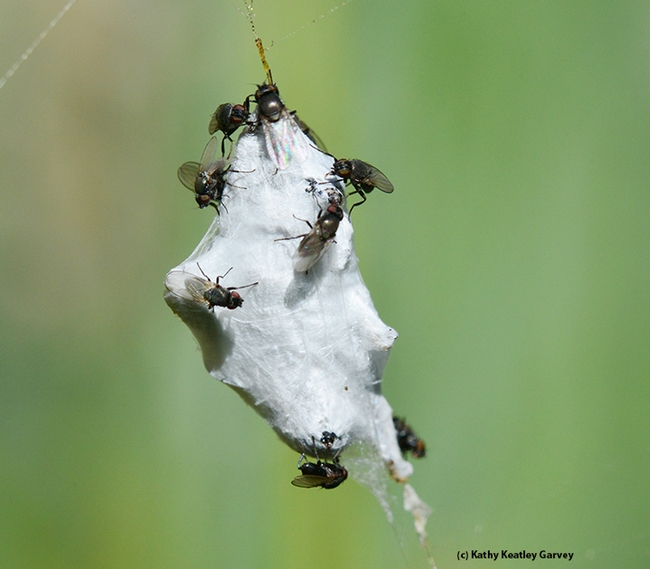
Close-up of freeloader flies on a bee wrapped by a banded garden spider. (Photo by Kathy Keatley Garvey)
The Spider and the Skipper
This is a a story about a spider and a skipper. Technically, a banded garden spider (Argiope trifasciata) and a fiery skipper butterfly (Hylephila phyleus, family Hesperiida). The garden spider lies in wait, its head down, clinging to its real...
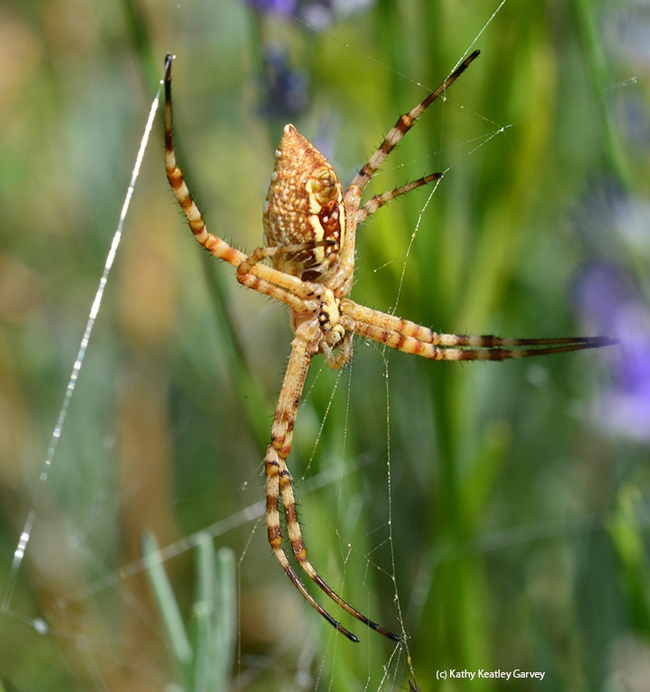
A banded garden spider (Argiope trifasciata)--as identified by UC Davis distinguished professor Art Shapiro--waits for prey. (Photo by Kathy Keatley Garvey)

The banded garden spider (Argiope trifasciata) wraps its meal, a male fiery skipper (Hylephila phyleus). (Photo by Kathy Keatley Garvey)

While the garden spider wraps its prey, two fiery skippers (Hylephila phyleus) prepare to mate on a Tithonia. (Photo by Kathy Keatley Garvey)

